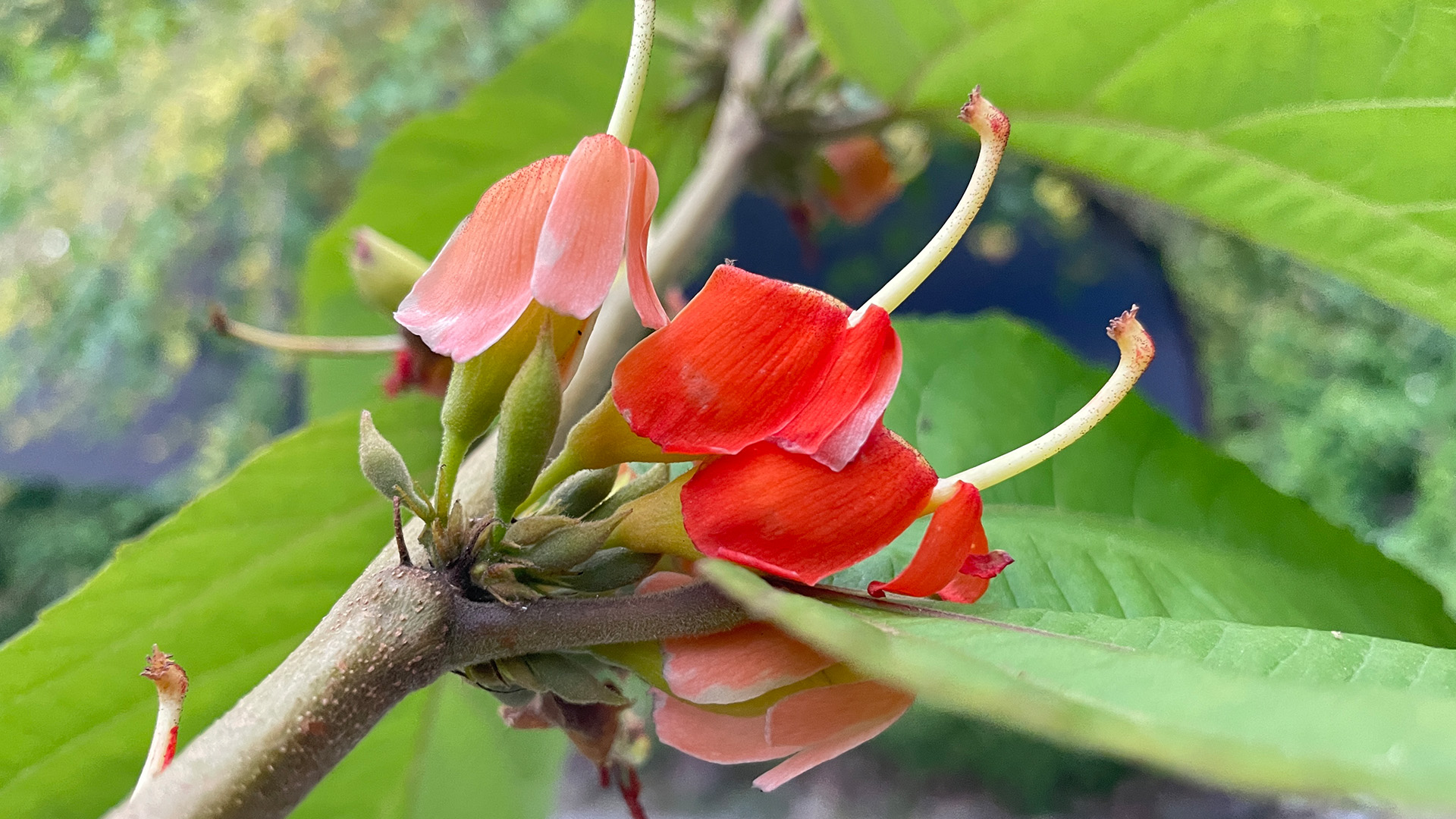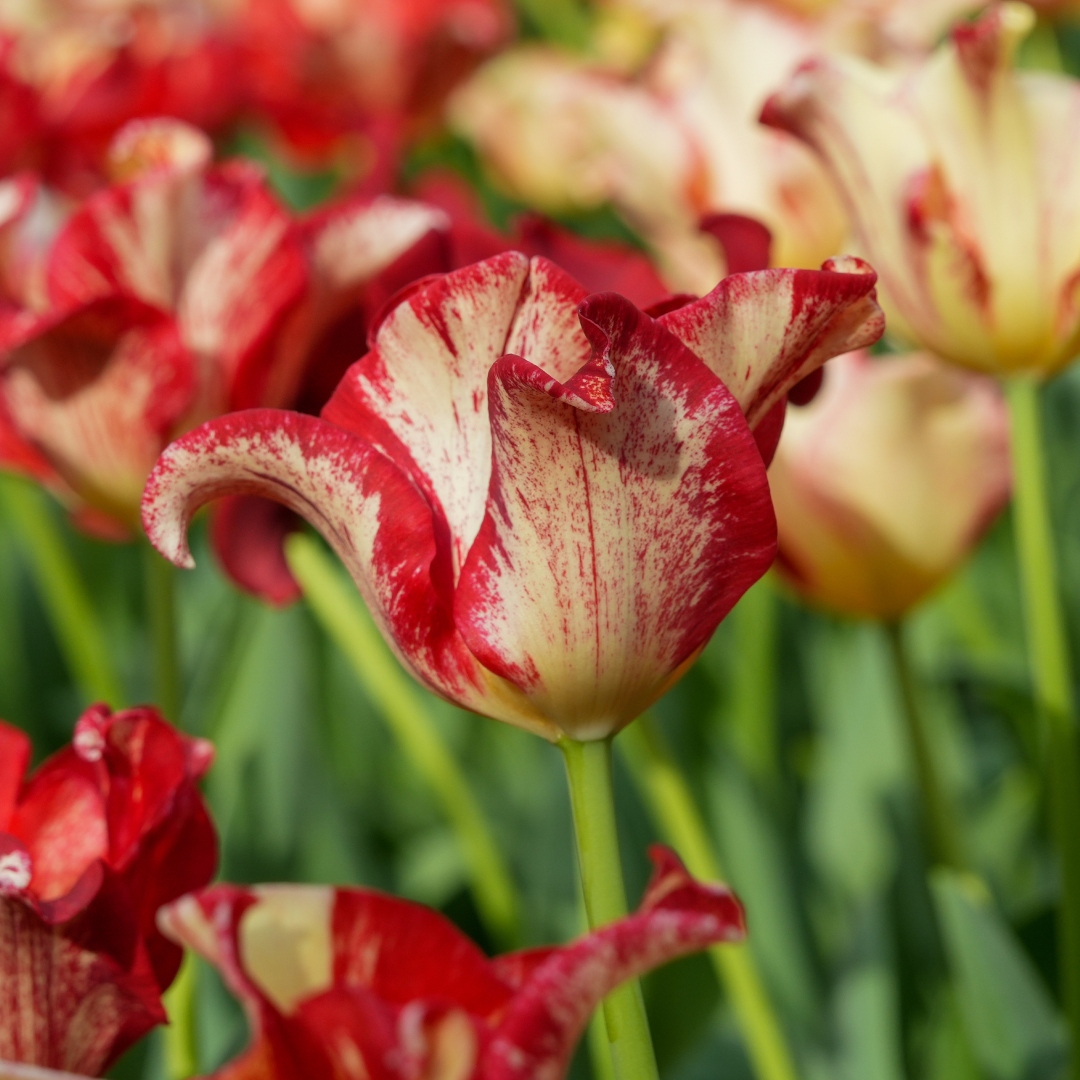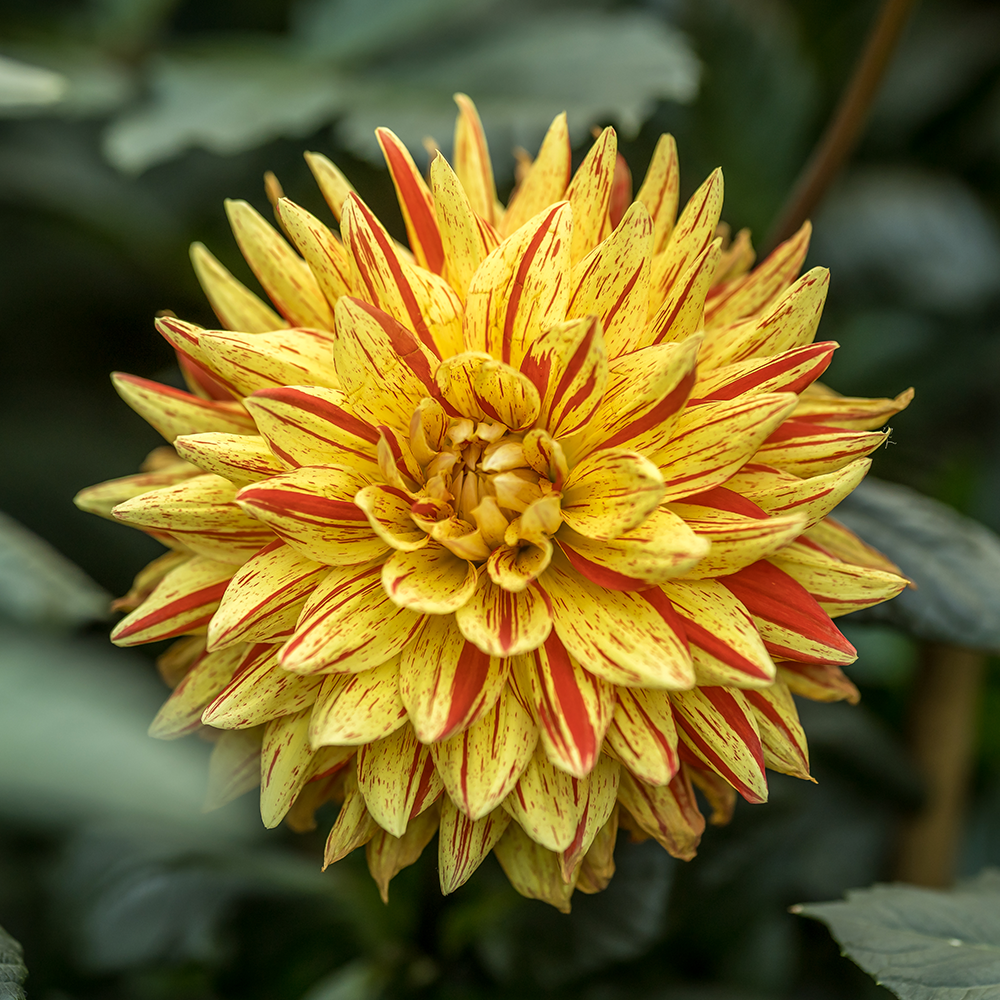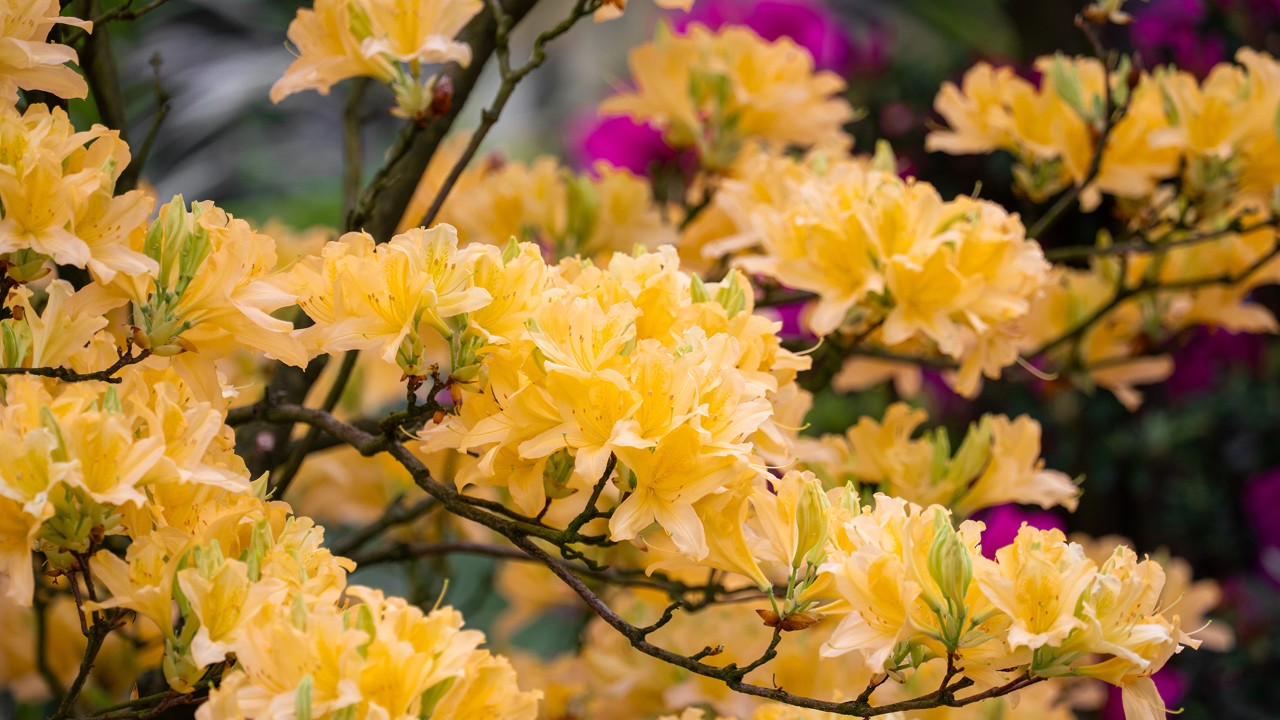
Cloud Forest is known to house several Vireya rhododendrons (Rhododendron section Schistanthe) since the Gardens opened in 2012. This year, we welcome their cousins, the azaleas, to Cloud Forest for the ‘Azaleas of Shangri-La' display!
Azaleas are the common name for a subgroup of the genus Rhododendron. Though their current taxonomic status is in flux, the evergreen azaleas are traditionally described as being in the subgenus Tsutsusi and deciduous azaleas are traditionally described as those of the subgenus Pentanthera.
There are more than 1,200 different species of Rhododendron, both evergreen and deciduous, that are naturally found in the temperate regions of Asia, North America, and Europe, with the highest concentration found in the Himalayas. The genus Rhododendron derives from the Greek words ‘rodon’ and ‘dendron’, which means ‘rose’ and ‘tree’ respectively. Rhododendron belongs to the heath family (Ericaceae) which consists of over 120 genera. (Fun fact: Blueberries share the same family as Rhododendrons!)
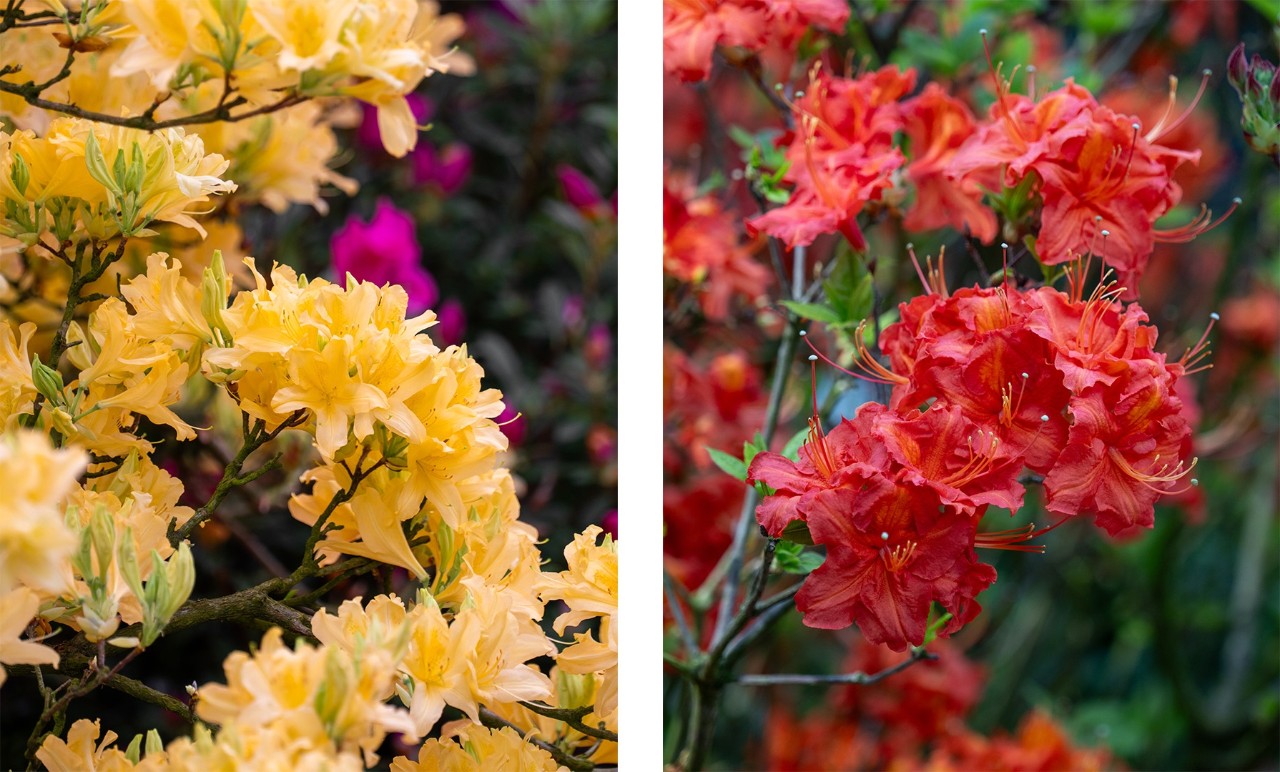 Rhododendron mollis is a hybrid deciduous azalea that produces large clusters of 7 to 13 flowers and can grow up to 180cm tall!
Rhododendron mollis is a hybrid deciduous azalea that produces large clusters of 7 to 13 flowers and can grow up to 180cm tall!
Both rhododendrons and azaleas are incredibly similar since they are all members of the Rhododendron genus. You can say that all azaleas are rhododendrons, but not all rhododendrons are azaleas. Here are some key differences between the two.
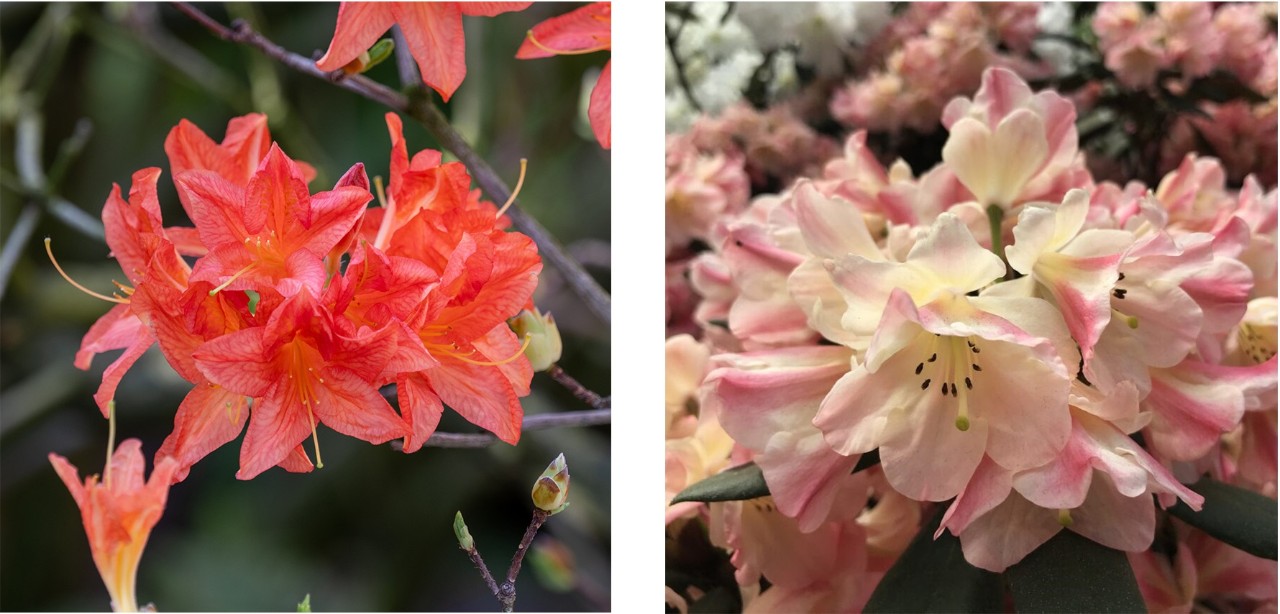 Can you spot the difference between the inflorescence of an azalea (Rhododendron ‘Knap Hill’ hybrid) on the left and a rhododendron (Rhododendron ‘Sierra Sunset’) on the right?
Can you spot the difference between the inflorescence of an azalea (Rhododendron ‘Knap Hill’ hybrid) on the left and a rhododendron (Rhododendron ‘Sierra Sunset’) on the right?
Azaleas produces funnel shaped flowers that consists of typically 5 stamens each, while rhododendrons produce bell shaped flowers that each possess 10 or more stamens. Their leaves are distinctively different as well. Azalea leaves are usually smaller and thinner, and are smooth to the touch, while rhododendrons leaves are larger and longer, thicker, and leathery in texture. Can you spot the difference between the azaleas in the display with the rest of the rhododendrons in Cloud Forest?
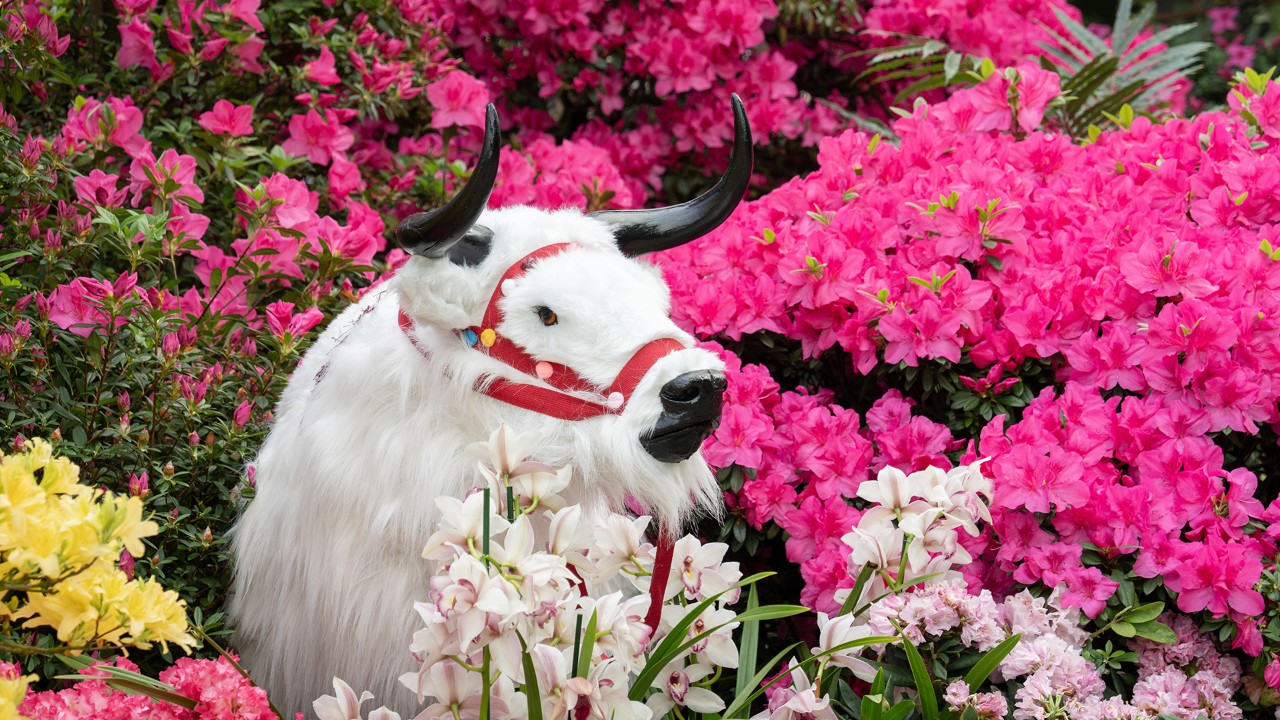 Rhododendron simsii providing the perfect photo backdrop
Rhododendron simsii providing the perfect photo backdrop
Azaleas are usually grown and bred for their showy flowers that bloom in late spring or early summer. They are typically identified with 5 petals that are fused at the base. They have a visible calyx, pistil, and usually carry 5 stamens. However, their flowers can vary in colour, sizes, textures and even forms. Some azaleas have stamens that have either partially or completely transformed into petals, which gives the flower a double petal appearance. The margins of the petals may be flat, ruffled, or even frilled. Azaleas vary even in colour patterns, ranging from single-coloured blooms to flowers with blotched or striped patterns.
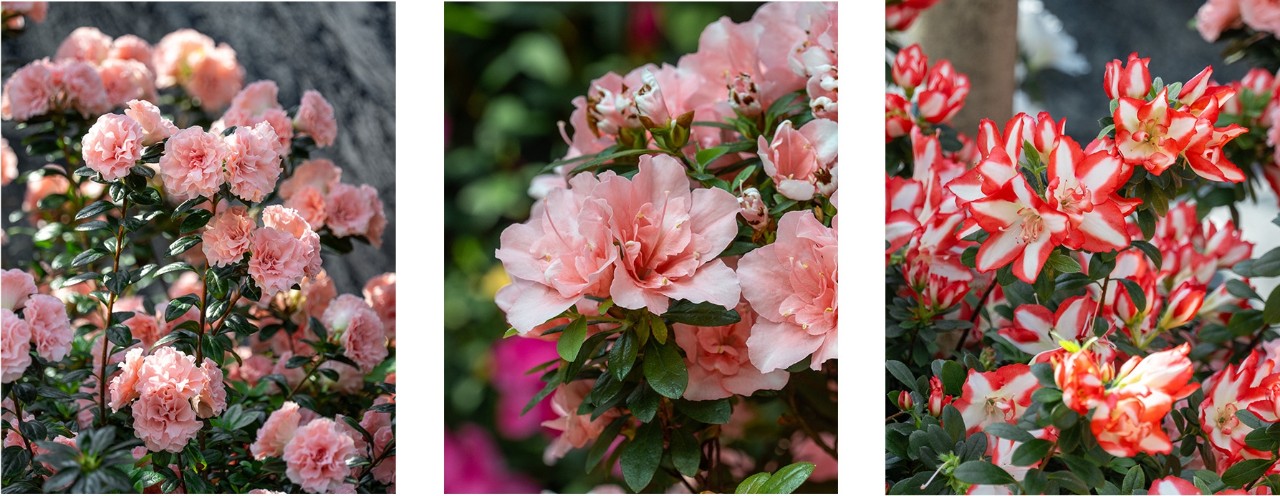 Left to right: Double-petaled flowers, semi-double petaled flowers, Single petaled flowers with thick, coloured margins.
Left to right: Double-petaled flowers, semi-double petaled flowers, Single petaled flowers with thick, coloured margins.
Some hybrids that you can find in this display include Rhododendron simsii (evergreen), Rhododendron indica (evergreen), Rhododendron mollis (deciduous), and Rhododendron ‘Knap Hill’ hybrids (deciduous). Come and visit these showstopping blooms at the Azaleas of Shangri-La display in Cloud Forest from now till 5 May 2024!
Written by: Sharifah Osman, Senior Manager (Research and Horticulture)
As an avid flora photographer, Sharifah is consistently curious about the natural world that surrounds her. So much so that she eventually pursued a career in horticulture while dabbling in botanical art and photography during her free time.
